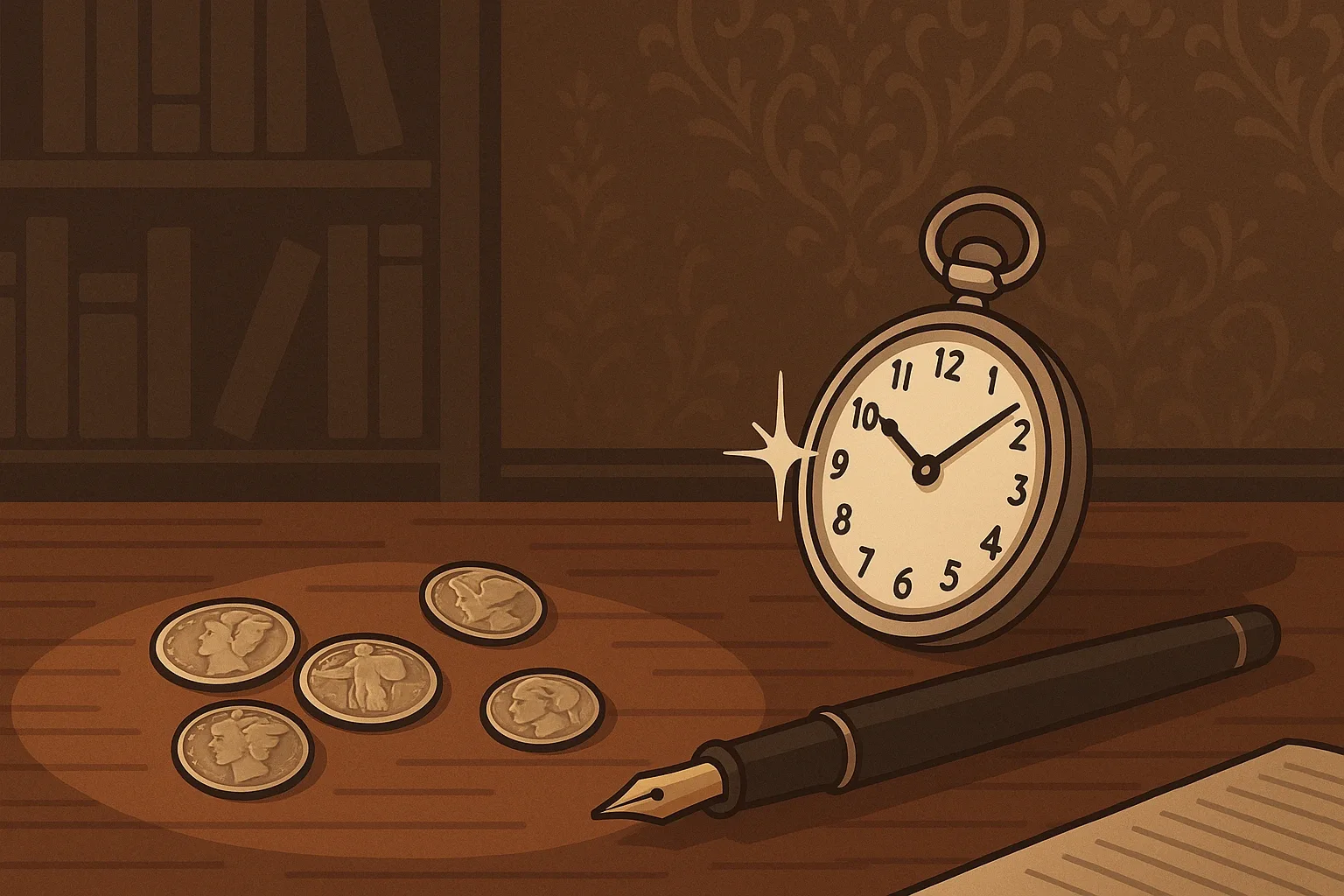Wow, So Elegant! Observing American Coin Design in 1920s
The 1920s were an era of prosperity, cultural dynamism, and artistic experimentation in the United States. This spirit extended even into the nation’s coinage. American coins from this decade are celebrated not only for their monetary role but also for their exceptional artistry, symbolism, and reflection of a rapidly modernizing society.
For numismatists, hobbyists, and curious travelers, these coins provide a unique lens into the Roaring Twenties. Each piece serves as a miniature sculpture, blending history and elegance of 1921 silver dollar worth in ways that continue to captivate collectors today.

Celebrated Artistry and Iconic Coins of the 1920s
The 1920s produced a collection of designs that remain among the most beloved in U.S. numismatics. Sculpted by some of the era’s finest artists, these coins carried bold imagery and timeless symbolism.
Lincoln Cent
Designer: Victor David Brenner
Design: Portrait of Abraham Lincoln on the obverse, wheat ears on the reverse.
Legacy: Introduced in 1909, it continued throughout the 1920s, symbolizing unity and enduring leadership.
Buffalo Nickel
Designer: James Earle Fraser
Design: A Native American profile on the obverse, and an American bison on the reverse.
Cultural impact: Evoked themes of heritage and the American frontier, making it one of the most iconic designs ever struck.
Mercury Dime
Designer: Adolph A. Weinman
Design: Liberty wearing a winged cap, representing freedom of thought and speed.
Significance: The name "Mercury" comes from its resemblance to the Roman god, but the design is actually symbolic Liberty.
Standing Liberty Quarter
Designer: Hermon A. MacNeil
Design: Lady Liberty holding a shield and olive branch, in a poised yet protective stance.
Symbolism: Captured both peace and readiness, reflecting post–World War I sentiment.
Walking Liberty Half Dollar
Designer: Adolph A. Weinman
Design: Liberty striding toward the dawn with the American flag draped across her shoulders.
Admiration: Widely regarded as one of the most beautiful U.S. coins, symbolizing progress and optimism.
Together, these designs reflect the artistry of a nation celebrating prosperity while preparing for change. They stand as enduring examples of how coins can embody both national identity and cultural values.
Artistic Mastery and Cultural Context
The 1920s, remembered as the Jazz Age or Roaring Twenties, were marked by economic prosperity, cultural innovation, and social transformation. Jazz music filled the streets, cinema and art flourished, and architecture embraced both classical revival and modernism. This vibrancy seeped into coinage, transforming U.S. coins into miniature works of art.
Coin designers of the era worked not only as engravers but as sculptors, trained in the fine arts. They brought a sense of elegance, symbolism, and cultural pride into coinage. Each design reflected more than just monetary utility—it served as a national emblem, a portable sculpture representing liberty, progress, and resilience.
Influential Artists of the 1920s
Victor David Brenner
Created the Lincoln cent in 1909, which continued throughout the 1920s. His bold portrait of Abraham Lincoln was the first U.S. coin to feature a real person, symbolizing respect and unity.
James Earle Fraser
Designer of the Buffalo nickel, drawing inspiration from Native American leaders and the American West. Fraser’s design carried strong cultural resonance and remains one of the most popular nickels ever minted.
Adolph A. Weinman
A master sculptor responsible for two of America’s most admired designs: the Mercury dime and the Walking Liberty half dollar. His artistry emphasized motion, light, and classical beauty.
Hermon A. MacNeil
Creator of the Standing Liberty quarter, which blended symbolism of peace and vigilance. His coin reflected America’s cautious optimism in the aftermath of World War I.
Augustus Saint-Gaudens’ Influence
Though he died in 1907, Saint-Gaudens’ artistic revolution in coinage with the Double Eagle gold coins influenced the entire generation of 1920s designers. His emphasis on high artistry elevated U.S. coins beyond mere monetary tokens.

Cultural Significance
Post–World War I Era: The imagery of liberty striding forward, eagles in flight, and shields of protection captured a nation seeking peace while remaining vigilant.
Economic Growth: Prosperity allowed the Mint to experiment with more artistic designs, aligning coins with national confidence.
Last of the Gold Circulation Coins: The 1920s also marked the last decade when gold coins circulated widely in the U.S., giving Saint-Gaudens’ designs a lasting historical significance.
Coins of this decade weren’t just currency—they were symbols of progress and optimism, reflecting a society eager to express identity and artistry in every detail.
How Modern Tools Help Explore Historic Coin Designs
For today’s collectors, appreciating the artistry of 1920s American coins is easier and more rewarding than ever thanks to digital tools. While traditional numismatic guides remain valuable, apps now provide instant access to reliable information and organization features.
The Coin ID Scanner app (available on Android and iOS) is one of the most practical resources for numismatists, hobbyists, and even travelers who stumble upon old coins abroad.
Key Features for Exploring 1920s Coins
Photo Identification
Take a picture of a Mercury dime, Buffalo nickel, or Walking Liberty half dollar, and the app instantly reveals mint year, type, composition, weight, diameter, and estimated value.Collection Management
Build a personal digital album to track your Lincoln cents, Standing Liberty quarters, and more. Easily sort by type, year, or mint mark.Extensive Database
With access to 187,000+ coins worldwide, the app provides context for U.S. classics as well as international designs.Smart Filters & AI Coin Helper
Narrow searches with advanced filters or receive AI-driven insights for rarities, errors, or grading questions.
By combining tradition with technology, collectors gain deeper knowledge while keeping their collections well-organized and protected.
Why 1920s American Coins Still Captivate Collectors
The allure of 1920s coinage lies in its ability to combine history, artistry, and symbolism in a way few other eras managed.
Historical Value: Coins like the Buffalo nickel and Mercury dime tell stories of national identity, cultural pride, and postwar optimism.
Artistic Beauty: Sculptors of the time elevated coinage to genuine art, producing designs still celebrated today.
Collectibility: These coins remain accessible for beginners while offering rarities and high-grade pieces that appeal to advanced numismatists.
For many collectors, holding a 1920s coin is like holding a tangible piece of American heritage—an elegant artifact of a nation’s culture captured in miniature form.
The Elegance Endures
The 1920s American coins are not just relics of the past but enduring symbols of artistry and innovation. From the grace of the Walking Liberty to the rugged strength of the Buffalo nickel, they embody a decade of prosperity and creative energy.
With the help of modern tools like the Coin ID Scanner app, collectors today can not only identify and value these coins but also preserve their beauty in organized digital collections.
In every detail—whether it’s Liberty striding forward or an eagle in flight—the coins of the 1920s still shine as small but powerful testaments to American elegance. For collectors, they remain an invitation to appreciate history through the lens of design, artistry, and national pride.




